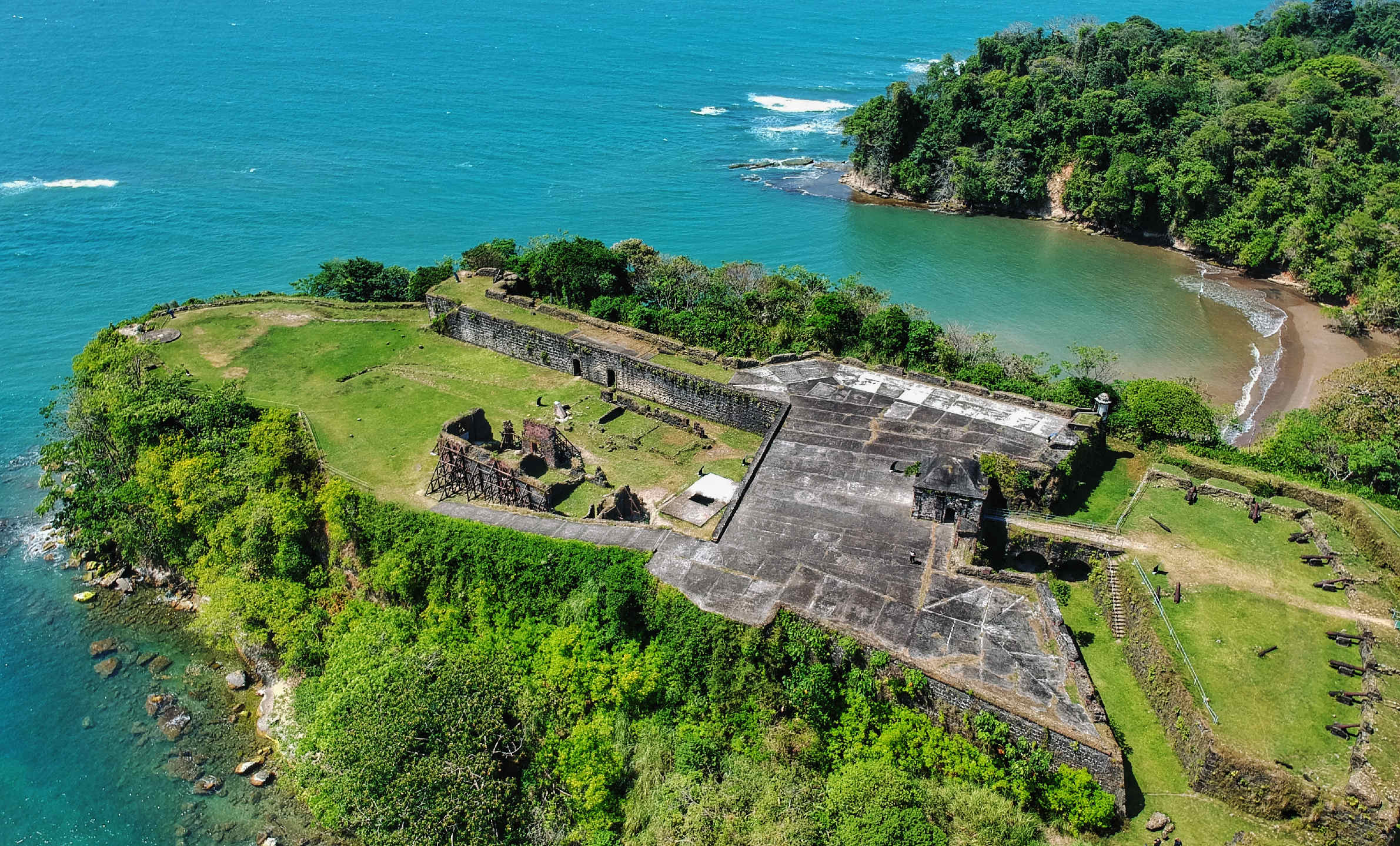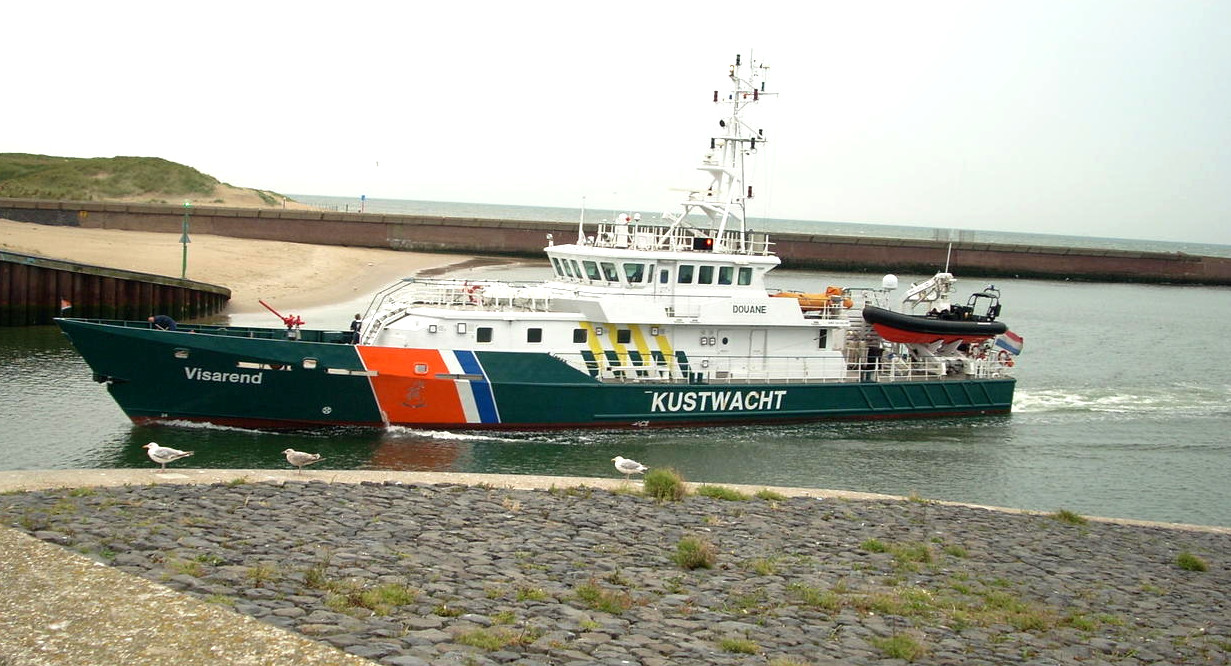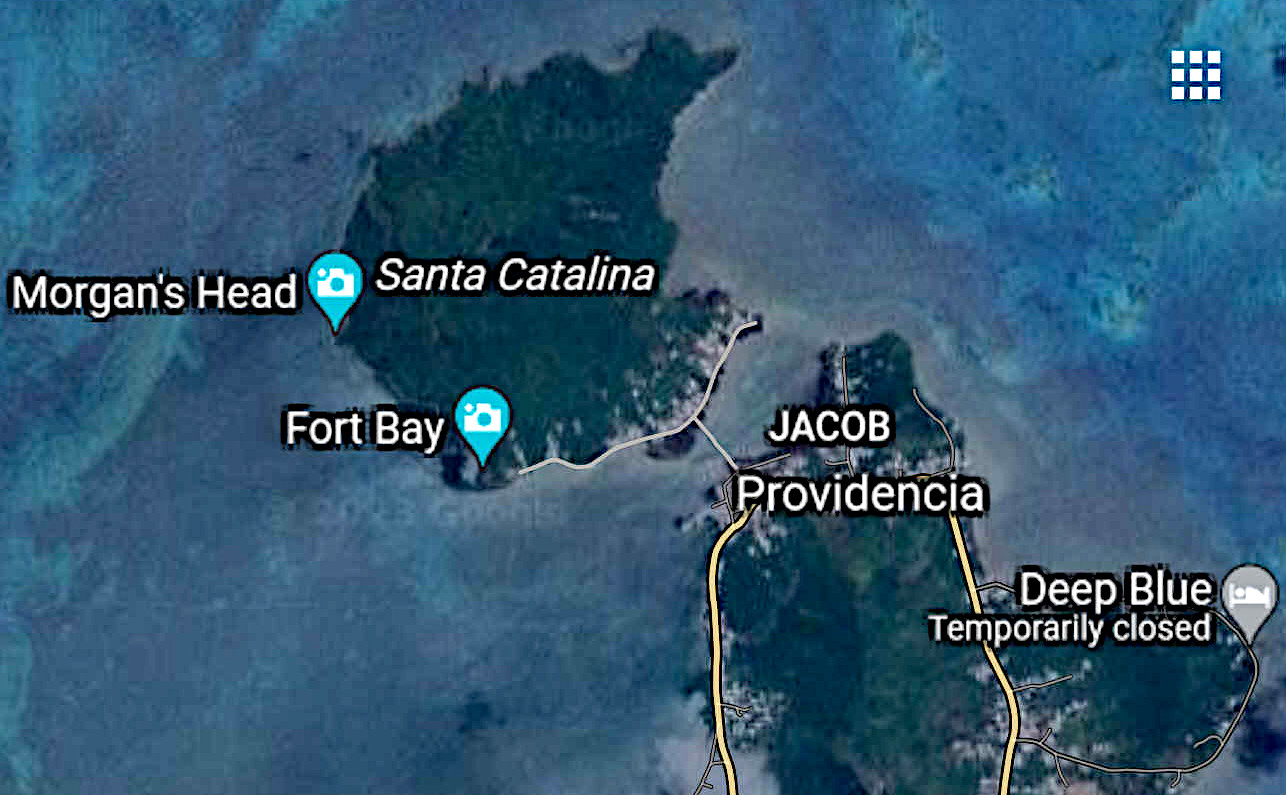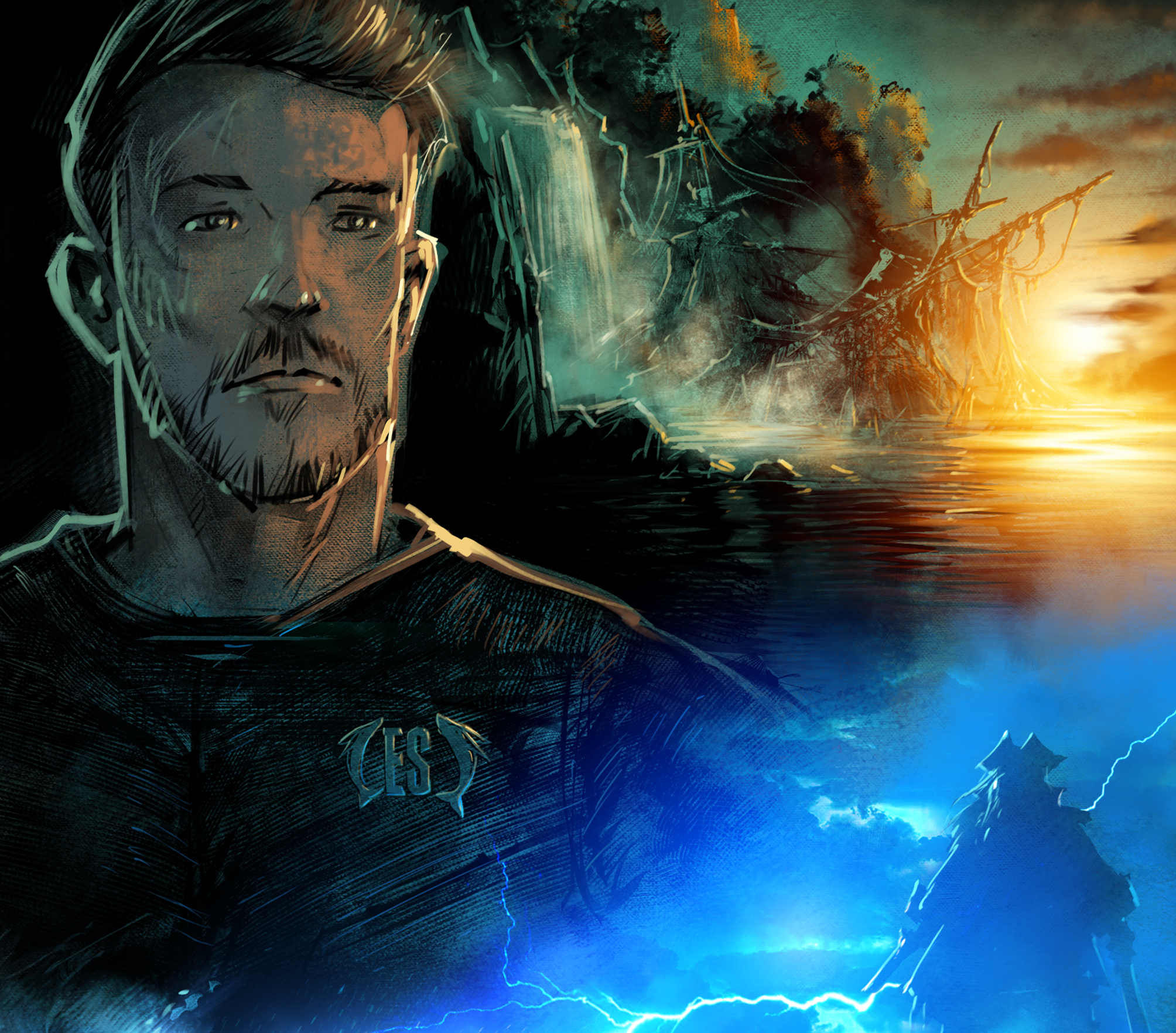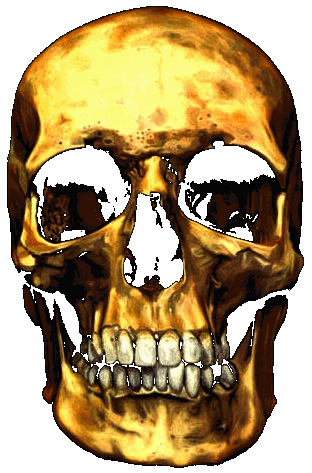|
S A N T A C A T A L I N A - T-ISLAND SCREENPLAY
Maties, please use our A-Z to navigate this site or return HOME me hearties.
|
|
|
|
SKELETON
ISLAND - Was a pirate secret location, known only to a small number of
captains by that name. But as piracy became unfashionable with mass hangings, the numbers
of those in the know, dwindled. Until, all that remained was a location
carved in wood. Generally hidden somewhere safe by the pirate concerned.
This location was useless without a chart giving the exact position that
each pirate buried their stash. The maps made on parchment, were handed down
to the next generations, by way of inheritance free of taxes.
In the year 1502, Christopher Columbus discovered the Chagres River, during his final, fourth voyage. Twenty-five years later, in the year 1527, the Chagres River was explored by Hernando de la Serna, a Spanish conquistador, who founded the town of Chagres at the river's mouth and eventually oversaw construction of the original fortress of San Lorenzo under instruction of King Philip II. Today, the Chagres River is the Panama Canal's chief source of water.
The conquest of the Incan Empire was one of the decisive campaigns in the Spanish colonization of the Americas. After years of preliminary skirmishes, 168 soldiers under conquistador Francisco Pizarro, captured the Sapa Inca Atahualpa at the Battle of Cajamarca in 1532, heralding the Conquest of Peru.
By 1534, the Spanish Monarchy had established a rainy-season gold route over the isthmus of Panama - Camino Real de Cruces - using mule trains and the Chagres River. From there, Spanish treasure galleons shipped the gold to Spain. Attracted to the treasure ships, pirates began attacking Panama's coast around 1560.
To protect the Atlantic terminus of Las Cruces Trail (Camino Real de Cruces), Spain built Fort San Lorenzo at the Chagres River's mouth. From 1587 to 1599, the fortifications evolved into a sea-level battery, completed in 1601. The plans of the massive fortress were made by the Italian engineer Baptist Antonelli. The Castle of San Lorenzo was built on top of a high reef, in a position that dominated the entrance of the Chagres River.
PANAMA
NORTH COAST - The remains of the mighty Fort San Lorenzo stand surrounded by the sparkling Caribbean Sea and over 30,000 acres of protected rainforest in the jungles of the Panama Canal watershed. Built to protect the entrance and exit of the main route to the Americas, the construction of the fort was ordered by Spanish King Felipe II in 1598, with limited effectiveness. In fact, between the years of 1596-1740, the fort was under almost constant attack by now-famous pirates such as
Sir Francis
Drake, Sir Henry Morgan and the English Admiral Edward Vernon.
In 1671, Henry Morgan launched a surprise attack on the Fort at San Lorenzo. During this foray, five of his ships, including the Satisfaction, struck the Lajas Reef so hard, that their hulls were splintered, and they were immediately sunk. Even so the attack continued bolder than before, with Henry's other ships making way through the reef, and the Spanish fort was taken, as part of, and leading to the sacking of Panama as his real target. His greatest triumph, for which he nearly hung at the gallows in London.
Three hundred and forty years later, give or take, and archaeologists using magnetic sensors, recorded deviations in the earth's magnetic field to suggest heavy metal objects lay on the seabed some two hundred meters offshore, and in relatively shallow water. Not long after this discovery, better equipped teams from, Texas University, dived the area and located some six cannons, consistent with those used by Captain Morgan. So, proving the historical writing of the events of 1671 to be an accurate account.
The navies of those countries bordering the Caribbean took only a passing interest from 2008 to 2012, mainly because the find was in Panamanian territorial waters; unmistakably part of their culture. Nevertheless, a watching brief was put in place by Colombia, Mexico, and Nicaragua - to the effect that sunken ships had been found - and that there were probably more ships, carrying Spanish silver and gold cargoes. But, in any event to keep a weather eye out for obvious treasure hunters, out to loot sites of heritage value, so as to prevent the loss of national assets of heritage value.
DAMEN STAN PATROL SHIPS - Nicaraguan patrol vessels based on the Damen Stan 4207 design seen above. The vessels were commissioned as Soberanía I (409) and Soberanía II (411), primarily for coastguard duties, including drug smuggling prevention. Unlike many other nations vessels, which are designed solely for coast guard or environmental monitoring, the Nicaraguan ships have added a military sensor suite and a deck gun. Militarizing the vessels boosted their cost from $20 million USD to $65 million USD.
John Storm and all the crew of the Hispaniola, were familiar with such tales, though real sure enough, but still within the realms of distanced piratical myths somehow. Detaching those events of legend from modern day living as something of wonder. This coming to the fore as the Elizabeth Swann's radar picked up a Nicaraguan patrol ship, and her high powered cameras picked up a deck gun, as the sleek zero emission vessel closed in on Santa Catalina, the first island of the Colombian Archipelago, including Providence Island and San Andreas, though the latter much further south, than the other two.
The CyberCore Genetica, super nano-computer, was securely locked in the Swann's Cyber-Vault, meaning Hal could interface, then relay information to John's incredible BioCore brain implant. John was in direct contact with Hal, without voice communication. Though, for appearances, John generally spoke normally, for Dan and Cleopatra.
"Hal, better monitor their comms."
"We've already been spotted John. They are just watching to see what we do next. Our position has been passed to 'Armada de Mexico' and the Panamanian National Aeronaval Service."
"Hmmm. They didn't hang about. Yes, unsurprising though, since this is not a Blue Shield sortie, and the Swann sticks out like a sore thumb. And - oh yes - we've just come from Jamaica, via Haiti. Sort of a red rag to a bull."
"We should be safe in international waters, John."
"True, but I wouldn't bank on it. They have a massive drug problem down here, and we are not exactly inconspicuous. They might think we're here to pick up a shipment." John laughed, he did not even smoke or drink alcohol, and was violently opposed to drug dealers. The irony of it. "Thanks Hal, keep on it."
Lord Huntington's Hispaniola was at least a day and a half behind the Swann, even at full throttle of the converted survey vessel's diesel auxiliary drives. John sometimes forgot just how fast the solar and hydrogen ship could be. He thought to warn Captain Tremaine.
"Swann to Hispaniola. Swann to Hispaniola, come in Hispaniola. Over."
"Hispaniola to Elizabeth Swann, Captain Tremaine here. Hello Captain Storm. Over."
"Hello Scott. We got a warm welcome here. Three navies know we're heading south west, toward Santa Cantalina. Be warned. We expect to be boarded and searched for contraband. Over."
"You mean drugs don't you John. Over."
"That I do. Offensive, but we'll take it on the chin. We're going to head to Muelle de Barcos, on Providencia. We can moor at the boat dock, and shop for fresh supplies. We're going to tell it straight, we're here to soak up history relating to Henry Morgan. Seriously, I can't wait to see Morgan's Point. Suggest you have similar explanation ready, since your vessel is far more 'smuggler' than ours. Technically, we're sight seers for now. No shovels. Over."
In the helm cabin, Lord Huntington grabbed the mike from Tremaine. "Hello John. Huntington here. Roger that. Rendezvous at Providence boat dock." Then effecting a Spanish accent, "Muelle de Barcos. Not a shovel in sight. Over and out."
The islands suffered considerable damage due to Hurricane Iota in November 2020. Most of the infrastructure was wiped out, and never fully recovered. John was hoping that the clues he and Huntington were expecting to find, were still discernible.
Predictably, the Nicaraguan coastguard patrol vessel headed straight for the Swann. As they motored closer, that warship hailed the Elizabeth Swann, having identified the vessel via the onboard Automatic Identification System, or AIS, as it is known.
"Attention Elizabeth Swann, this is the Coastguard vessel Soberanía, please stop all engines and allow us to board for routine customs inspection."
"Calling coastguard patrol Soberanía, this is the Elizabeth Swann. We've powered down. Please board via the portside sponson, and welcome. We carry no cargo, only crew."
The Damen Stan class patrol vessel got as close as their captain dared. A small rigid inflatable, armed with a machine gun, and three crew, was lowered into the sea. The RIB struggled in the choppy sea, but eventually motored up to the port sponson, when John Storm threw them a line, and pulled them close to.
"Welcome onboard our humble zero pollution vessel lieutenant." The slightly overweight Nicaraguan sailor seemed taken aback at the design of the Swann, as he mounted the sponson rather clumsily. He spoke English better than John spoke Spanish, though all comments in their native tongue were near instantly translated by Hal. Giving John the advantage. "I'm John Storm, captain of this ship."
"Senor Storm," the lieutenant saluted. John saluted back. "Thank you for your cooperation. This is an interesting vessel. Do you mind if my men look around?"
"Not at all lieutenant. Be our guest."
The Columbian Archipelago that includes San Andreas, Santa Catalina and Providence Islands, is swarming with naval ships. Columbian, Mexican, Panamanian and Nicaraguan navies routinely patrolling close by, triggered by the discovery of Henry Morgan's ship 'Satisfaction' at Lajas Reef between 2008-10, the military of these countries have been alive to the possibility of a claim on the Aztec gold, looted by the Spanish Conquistadors. Then re-acquired by the Welsh privateer momentarily in 1671, to be lost again.
HURRICANE IOTA NOVEMBER 2020
- Providencia (boat dock) and Santa Catalina were ravaged by extreme weather
when heading into 2021.
The hurricane was first considered a Category 2 but just before passing Providencia it developed into a Category-5 tropical cyclone which NASA said can have wind speeds of up to 253km/h (157mph) and has the ability to cause catastrophic damage.
PROLOGUE: ROYAL AFRICAN COMPANY - King Charles II, Royal Charter James Stuart II, transport goods from Africa: Bloody Triangle. SCENE 1. THE BATTLE OF OCRACOKE - Lt Robert Maynard, Blackbeard's curse, beheading & torturous interrogation on the Adventure SCENE 2. EARTHQUAKE JAMAICA - Present Day - An earthquake hits Port Royal, disturbing the sunken city & Palisadoes cemetery. SCENE 3. BLUE SHIELD ENGLAND - Blue Shield, Newcastle UK, UNESCO requests Storm catalogue underwater city UNEP World Heritage Site. SCENE 4. HENRY MORGAN'S DEATH - Henry Morgan has a heart attack; funeral ceremony at Palisadoes cemetery, old Port Royal. SCENE 5. SUNKEN CITY SURVEY - Present Day, Swann's sensors scan the ocean bed, revealing mausoleum former Governor of Jamaica. SCENE 6. JUNE 1692 TSUNAMI - Jamaica, June 7th, an earthquake hits Port Royal, then a tsunami washes the pirate haven under the sea. SCENE 7. HENRY MORGAN'S COFFIN - John Storm & ROV, comes face to face with Henry's skeletal remains. Finds interesting wooden engraving. SCENE
8. BBC
JILL BIRD - London. John
Storm's finds lost Henry Morgan's pirate remains. "And for those of you wondering,
there was no treasure." SCENE 10. SHIP'S COOK - William Gray helps John Long's cut-throats to crew for Huntington's Hispaniola, Long a dab hand on the galley. SCENE 11. ARCHAEOLOGICAL SOS - Huntington (BGS bigwig) asks John Storm for help with shipwreck survey - meet in the Caribbean, Haiti. SCENE 12. SKELETON ISLAND - Intrigued by map proffered by Lord Huntington, John agrees to switch attention to location, to coast of Panama. . SCENE 13. SANTA CATALINA - Colombian, Mexican, Panamanian, Nicaraguan patrols re: 'Satisfaction' & hunt for Aztec gold, Spanish Conquistadors. SCENE 14. TREASURE ISLAND - Hurricane Iota erased map clues, Isla Providencia. Longstride believes location of Blackbeard's/Morgan's treasure. SCENE 15. KIDNAP - Black Jack & Billy Bones kidnap Dan, Cleopatra - lock in Hispaniola with Tremaine. Hal alerts John to events via BioCore. SCENE 16. DOUBLE CROSS - Maynard pact with Spanish Navy to blockade Caribbean to capture John & Swann. Longstride deal Aztec Golden Skull. SCENE 17. BLACKBEARD'S CURSE - John retakes Swann, Hal immobilizes Black Jack and Billy Bones and rescues prisoners on Hispaniola. SCENE 18. MORGAN'S TREASURE SHIP - John deciphers carving code helped Dan and Cybercore Genetica. Dives to find privateer's shipwreck. SCENE 19. BILLION DOLLAR DEAL - John negotiates with Panama, Peru, Colombia, Ecuador & Blue Shield for % salvage based on wreck video. SCENE 20. BLOCKADE RUNNER - Swann navigates through Spanish Armada & Royal Navy blockade in stealth mode, invisible to radar. SCENE
21. BERMUDA TRIANGLE - Pirates
head into
Bermuda Triangle, Colombian Navy in pursuit:
BBC Sky News. Never to be seen again.
|
|
SHIPMATES DIG OUR A-Z FOR PIRATES GOLD OR PLOT A COURSE HOME YO HO HO ME HEARTIES
This website is Copyright © 2023 Cleaner Ocean Foundation & Jameson Hunter - All rights reserved, Protected internationally as per the Berne Convention.
|
